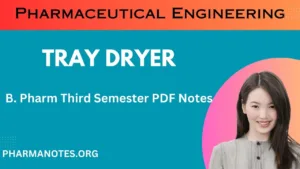Tray dryer

Tray dryer
Tray dryers are a vital part of various industries, offering a reliable and efficient solution for drying materials. These versatile machines have found applications in pharmaceuticals, food processing, and the chemical industry, among others. In this article, we will delve into the world of tray dryers, exploring their types, working principles, advantages, applications, and much more.
Types of Tray Dryers
Tray dryers come in different types to cater to specific drying needs. The three main categories include:
- Conventional Tray Dryers: These use conventional heating methods and are suitable for a wide range of materials.
- Vacuum Tray Dryers: Ideal for heat-sensitive materials, these dryers work under reduced pressure.
- Fluid Bed Tray Dryers: Known for their enhanced drying efficiency due to fluidization.
Principle of Tray Drapers
In the tray dryer, hot air is continuously circulated. Forced convection takes place to remove moisture from the solids placed in trays. Simultaneously, the moist air is removed partially. (Shelf, cabinet or compartment dryer)
Construction of Tray Drapers
• It consist of rectangular chamber whose walls are insulated. Trays are placed inside the heating chamber. Laboratory dryers contains 3 trays minimum & in industry 20 trays
• Each tray is rectangular or square & about 1.2 to 2.4 meters square in area. Trays are usually loaded from10 to 100 mm deep
• Distance between bottom of upper tray & surface of the substance loaded in the subsequent tray must be 40mm.
Dryer is fitted with a fan for circulating air over the trays in the corner of chamber, direction vanes are placed to direct air in the expected path.
Working of Tray Drapers
• Wet solids is loaded into trays. Fresh air is introduced through inlet, which passes through the heaters & gets heated up.
• Hot air is circulated by means of fans at 2 to 5 meter per second. Turbulent flow lowers the partial vapour pressure in the atmosphere & also reduces the thickness of air boundary layer. As water evaporates from the surface, the water diffuses from the interior of solid by capillary action. These occur in single pass of air.
• The time of contact is short & amount of water is picked up in a single pass is small. Therefore discharged air to the tune of 80– 90 % is circulated back through fans only 10-20% of fresh air is introduced.
Advantages of Tray Drapers
1. Handling of materials can be done without losses
2. It can be operated batch wise, for following reasons:
a) Each batch can be handled as separate entity
b) Equipment is readily adjusted for use in drying of variety of materials
c) Valuable products can be handled efficiently
Disadvantage of Tray Drapers
1. It requires more labour to load & unload
2. Time consuming
Uses of Tray Drapers
Following substances can be dried;
1. Sticky materials
2. Plastic substances
3. Precipitates
4. Chemicals
5. Tablet granules & powders
FAQs
- Are tray dryers suitable for heat-sensitive materials?
- Yes, vacuum tray dryers are ideal for heat-sensitive materials.
- What safety measures should one follow when operating a tray dryer?
- Safety measures include proper ventilation, temperature control, and equipment inspections.
- Can tray dryers be used for drying pharmaceuticals?
- Yes, tray dryers are commonly used for drying medicines and pharmaceutical ingredients.
- How do tray dryers contribute to sustainability?
- Tray dryers can be made more eco-friendly by adopting energy-efficient and environmentally conscious practices.
- What is the future of tray drying technology?
- The future holds promises of innovation, automation, and smart tray dryers for greater control and efficiency in the drying process.
Also, Visit:
B. Pharma Notes | B. Pharma Notes | Study material Bachelor of Pharmacy pdf
